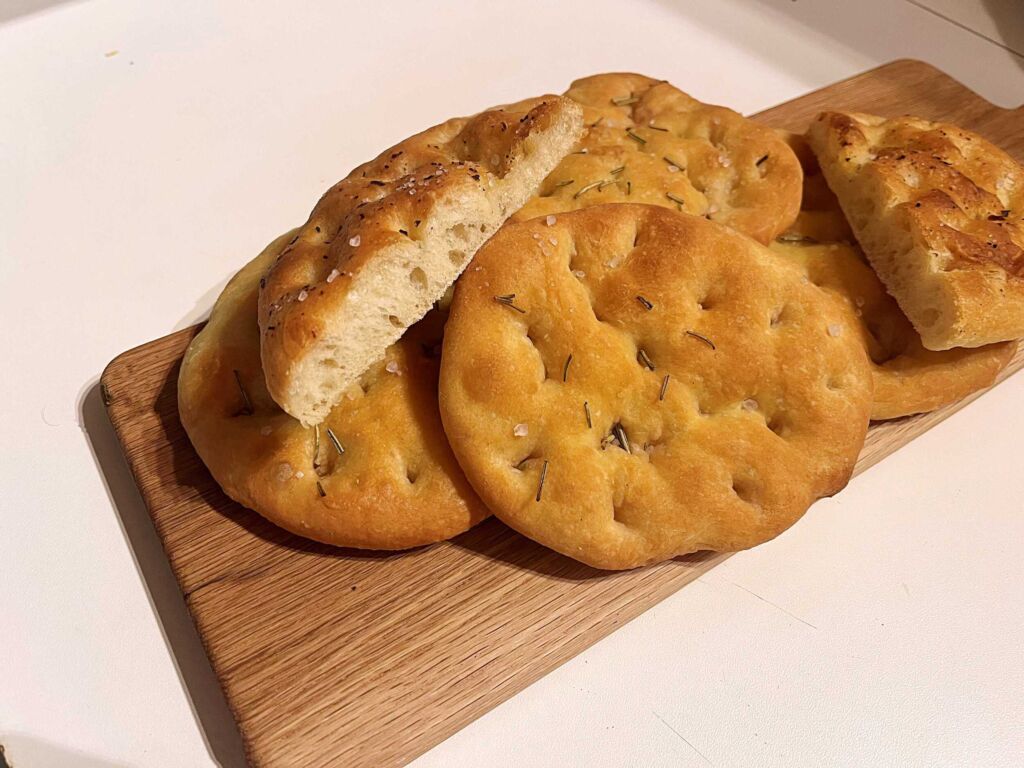
focaccine
Focaccine are mini versions of our favorite Italian flatbread, soft and fluffy on the inside with a crunchy crust. Perfect for making sandwiches and filling with all your favorite cured meats and cheeses. These are little bread pillows, rich with olive oil and with airy bubbles.
The dough for focaccine is simple, no-knead and does not require a mixer or special equipment. I’m forever amazed how only a few simple ingredients can create a multitude of different beautiful yeasty bread products.
Focaccine can be left plain with just olive oil and salt, or “decorated” with a multitude of other Italian flavors like herbs, tomatoes or olives.
Ingredients
- Flour – type 00 and manitoba
- Warm water
- Yeast
- Sugar
- Extra virgin olive oil
- Salt
I like a mix of type 00 flour and a strong flour like manitoba or bread flour. The 00 is finely ground and allows for a soft dough. Mixed with a strong flour, it creates a dynamic dough with a strong gluten network and delicate crumb.
Step by Step
Let’s get started making this one bowl, no-knead focaccine bread dough!
First, weigh both flours into a large bowl. Whisk in the yeast and a pinch of sugar. Instant dry yeast doesn’t need to be activated in water first and can be added straight into the dry ingredients. Sugar helps to jump start the activation of the yeast.
Pour in the lukewarm water and mix until all the flour is incorporated, and a shaggy dough begins to form. I strongly recommend using your hands. It’s our best mixing tool and it helps you understand and learn how dough feels at different stages of the bread making process. How wet or dry is the dough? Is it lumpy or smooth?
Add the olive oil and salt. Use your whole hand to squeeze the oil into the dough to incorporate it. At first, it might not seem like it will come together, but just keep going. Work and massage the dough until you achieve a homogeneous ball. It will still be wet and sticky and that’s good! Don’t add more flour.
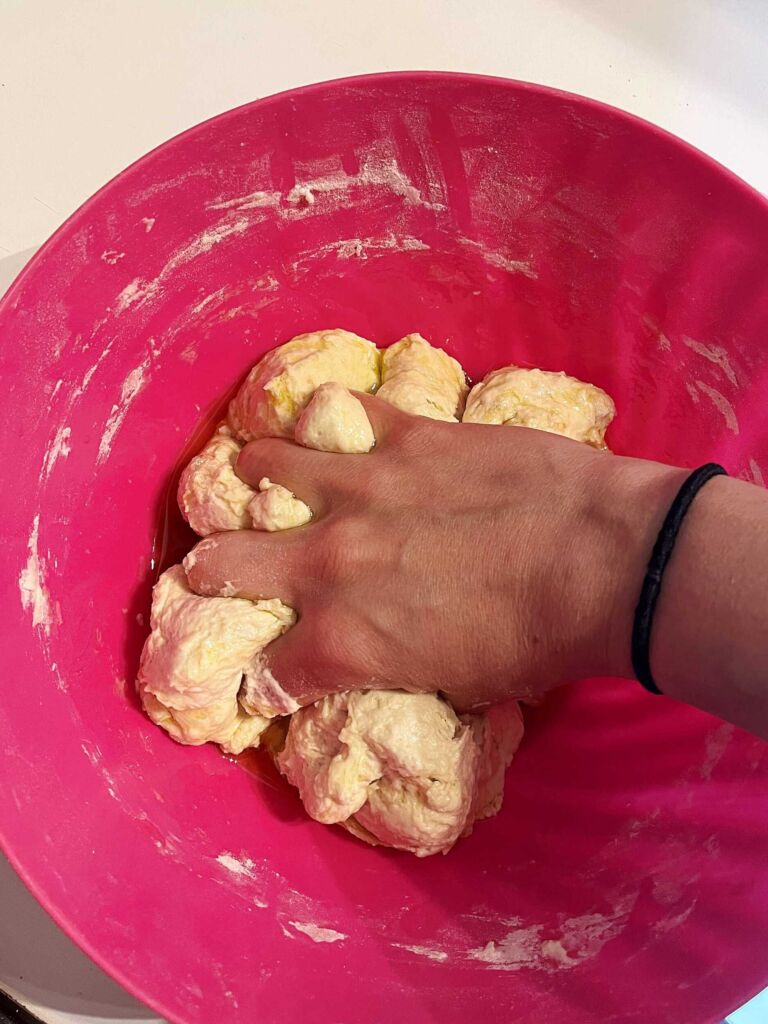
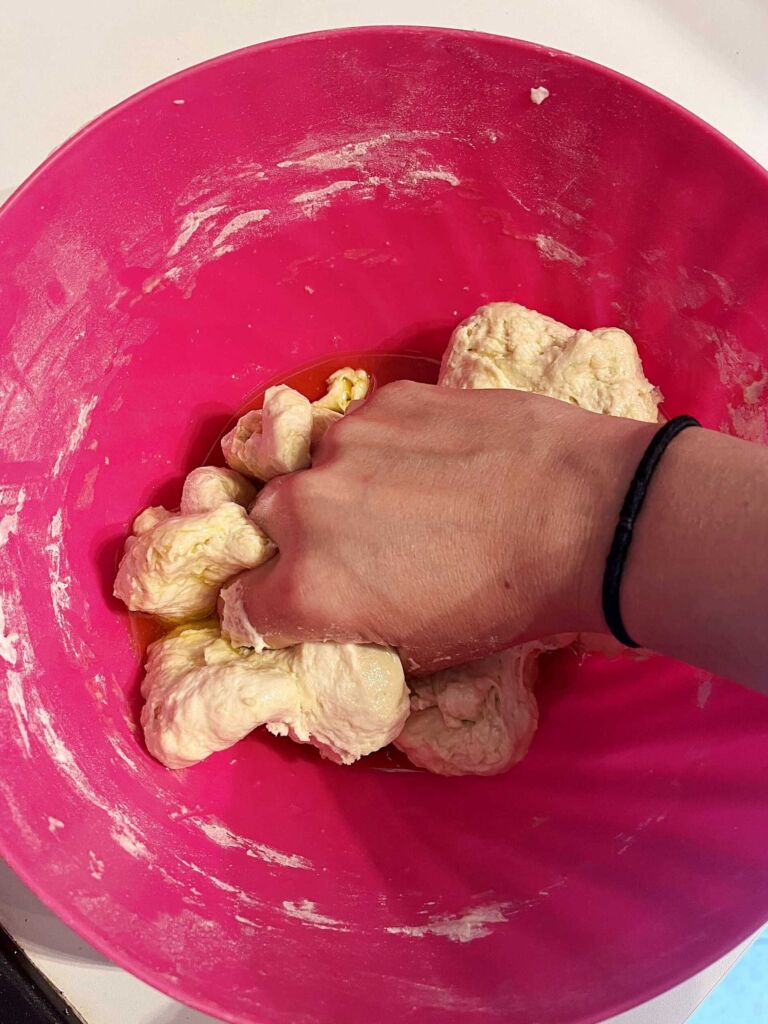
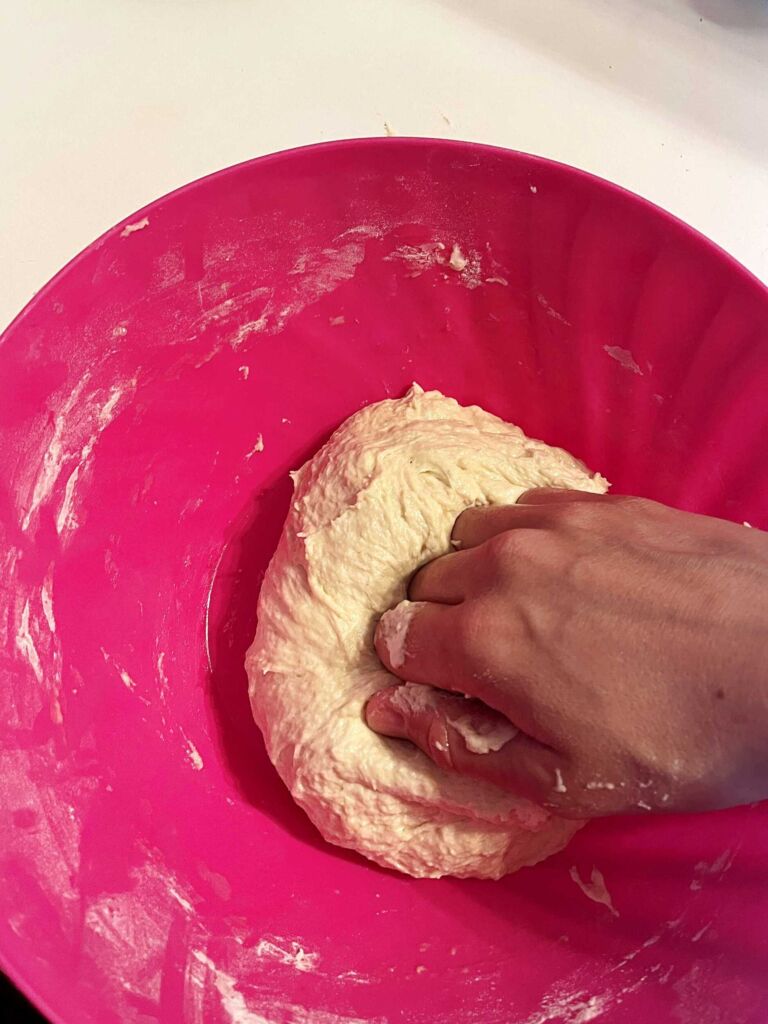
Cover the bowl with a towel or plastic wrap and let sit at room temperature.
After 30 minutes, make folds in the dough. Since it is so sticky, wet your fingers first, and then make a digging motion, scooping the dough from the outside and folding it in towards the center. Turn the bowl 90 degrees and repeat all the way around.
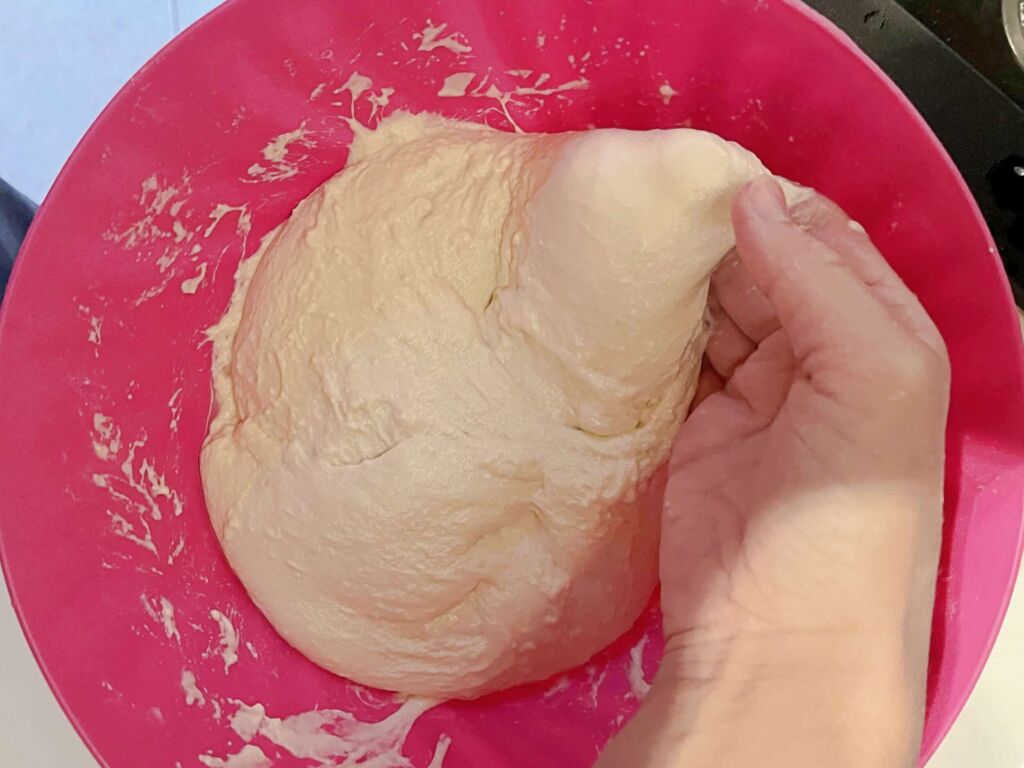
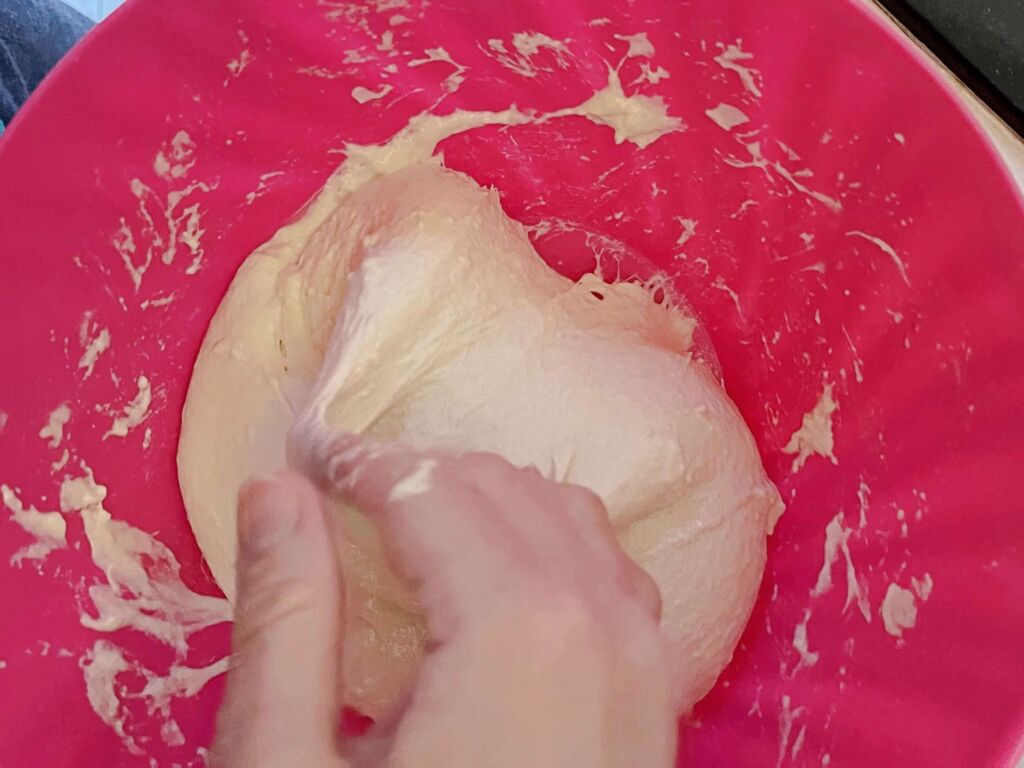
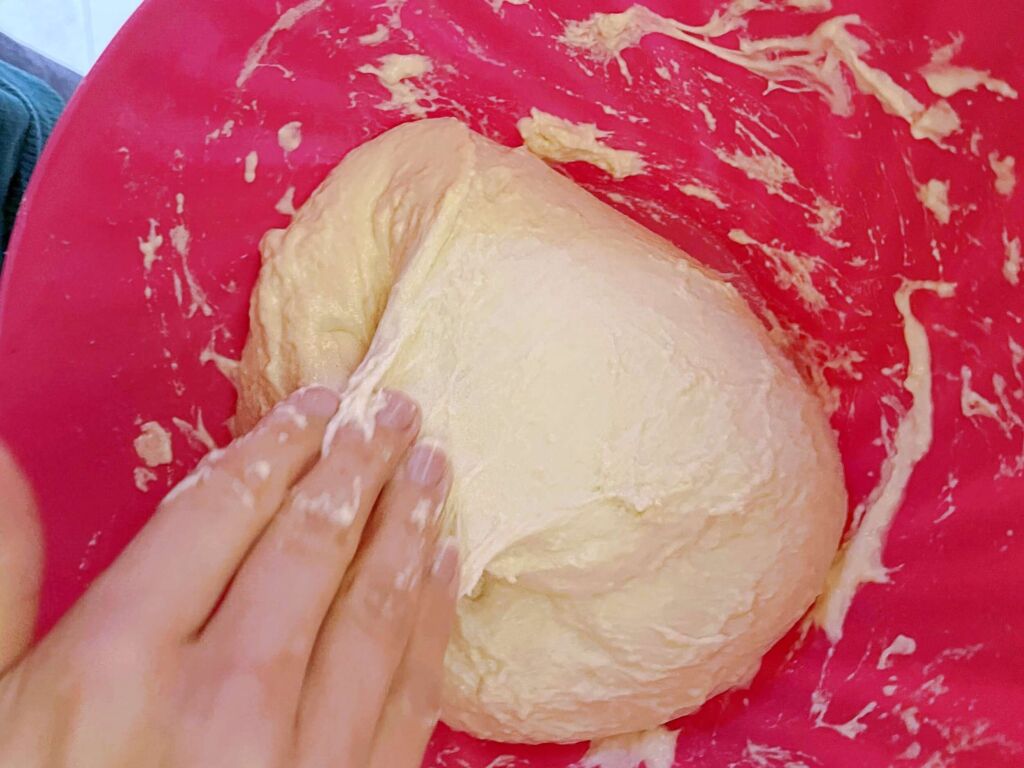
Repeat this step after the next 30 minutes.
Then let the dough rest another 1 hour, undisturbed.
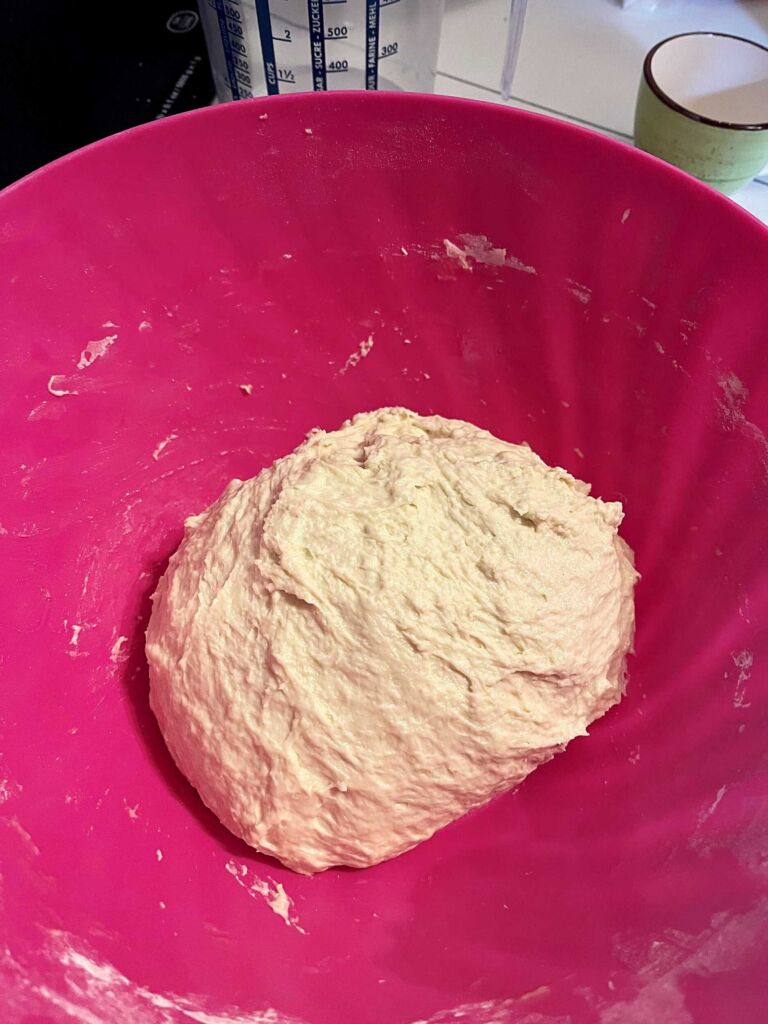
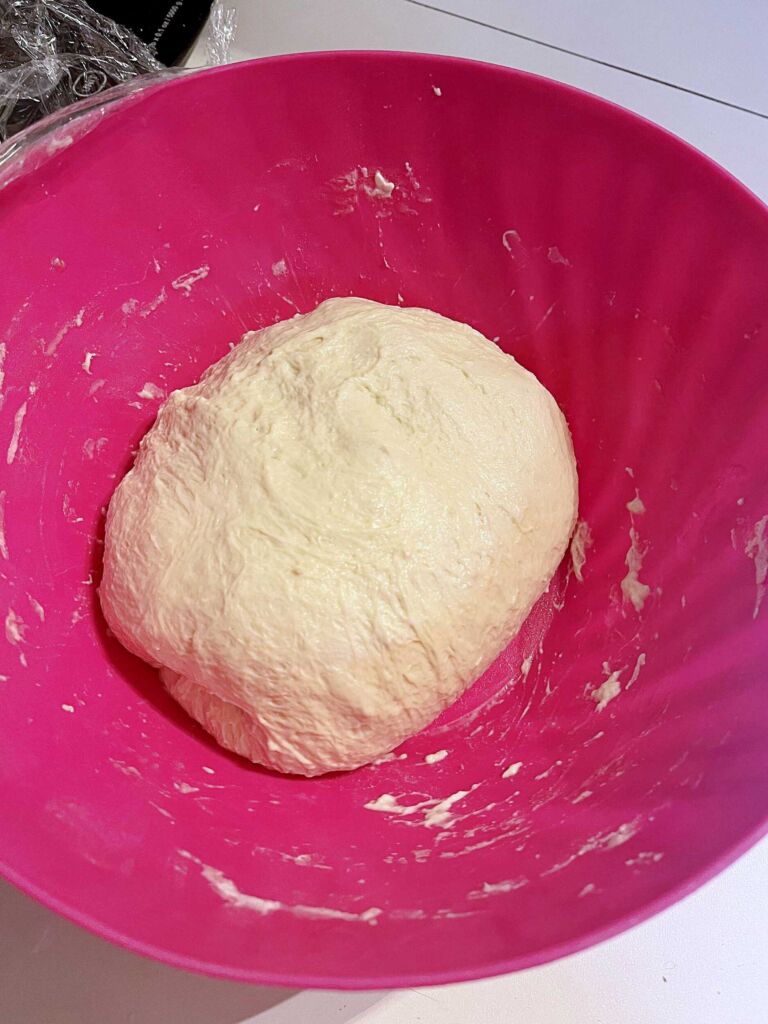
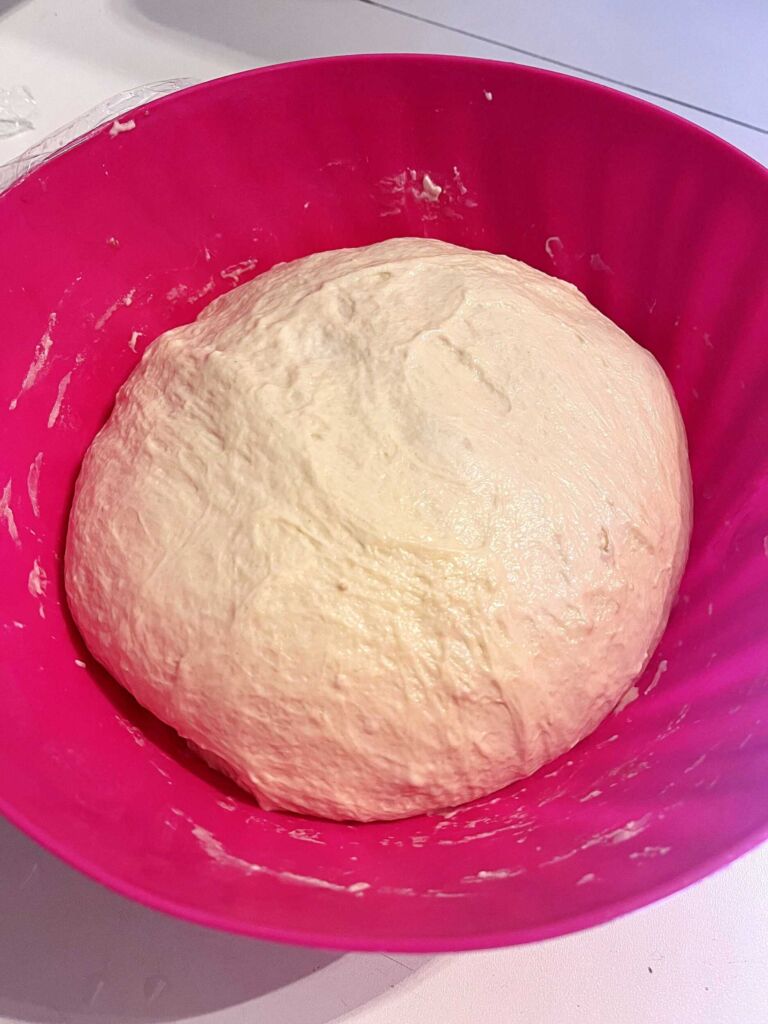
Turn the dough out onto a floured surface and divide into 8-10 pieces, depending if you want small or medium focaccine, 70-90g each.
Form each piece into a ball by pulling the outsides into the middle and pinching. Then roll it over so the seam is on the bottom. Make a cage over the ball with your fingers and gently make a circular motion around the ball. This will make the ball smooth with the top taut.
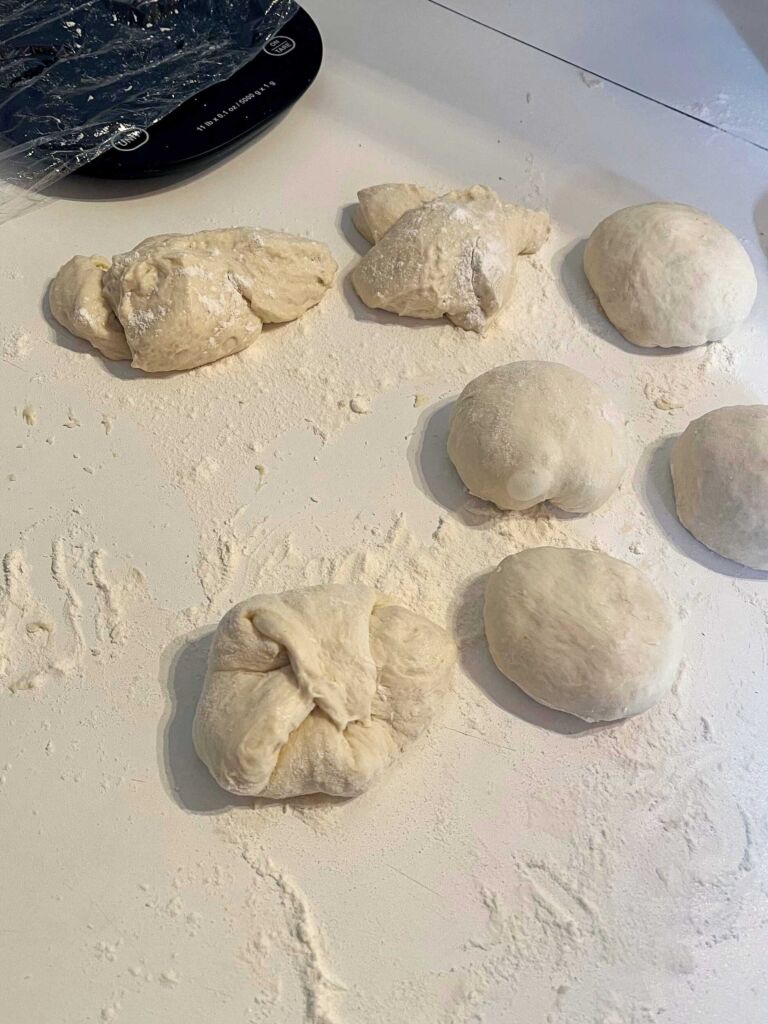
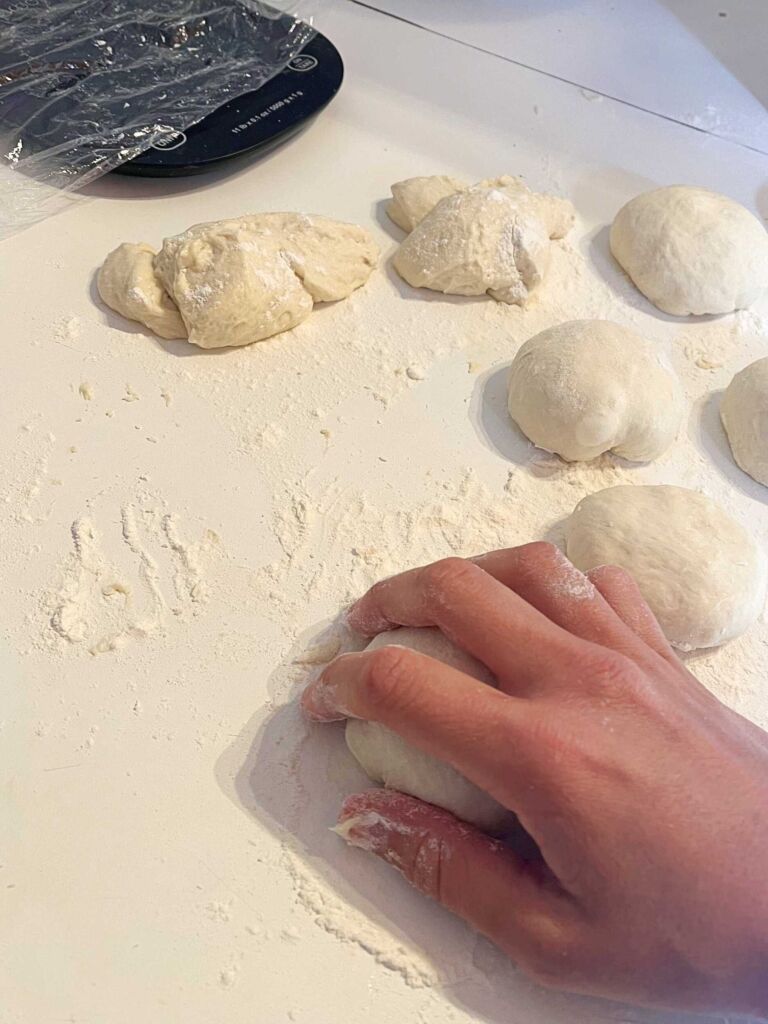
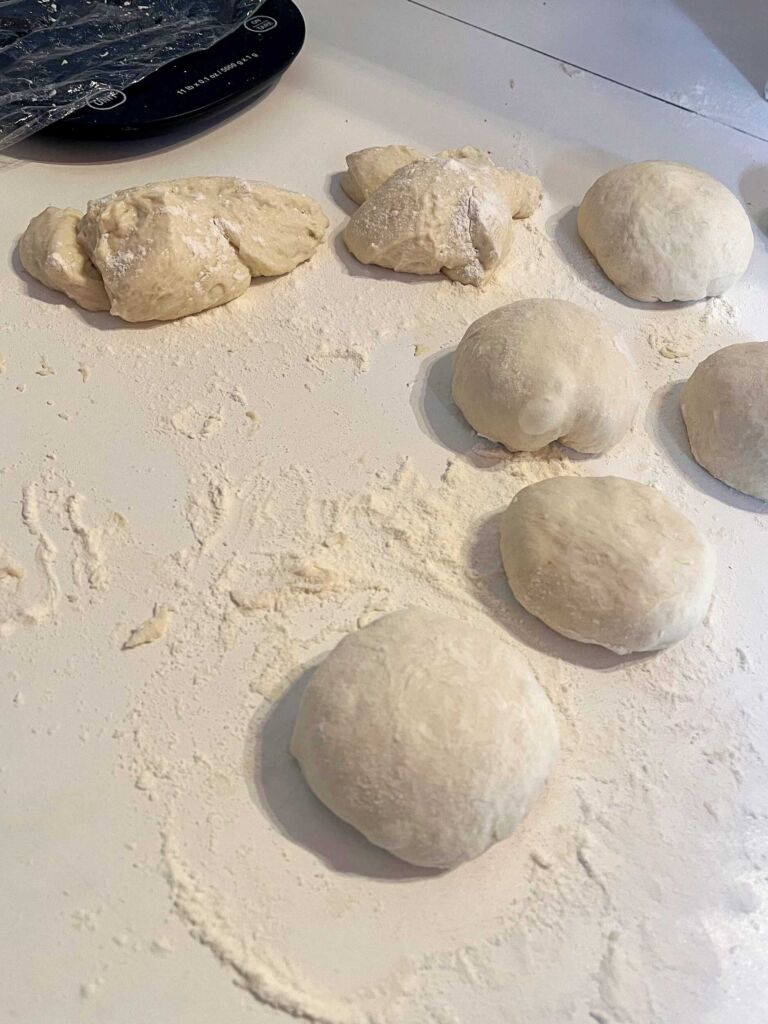
Then, make each ball into a disc, either with a rolling pin or by pressing it out with your fingers. You can also pick up the disc and stretch it out, like you’re making pizza dough. They should be roughly 1cm thick. Place the discs on a baking tray lined with parchment paper. Cover and let rest for 30 minutes.
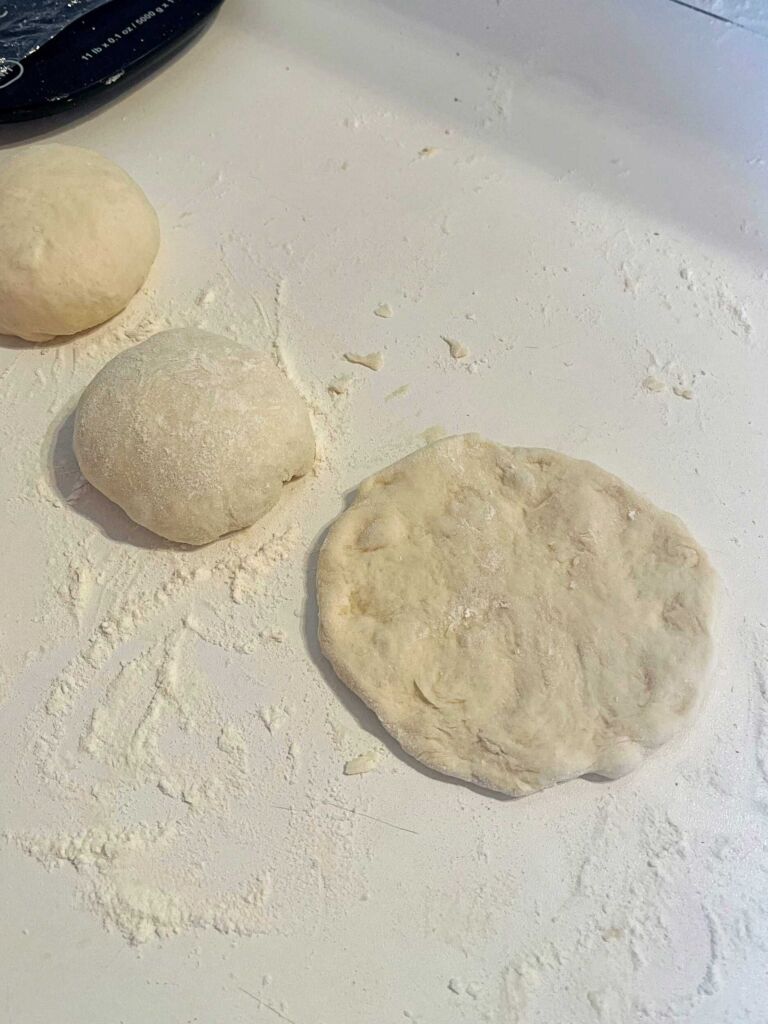
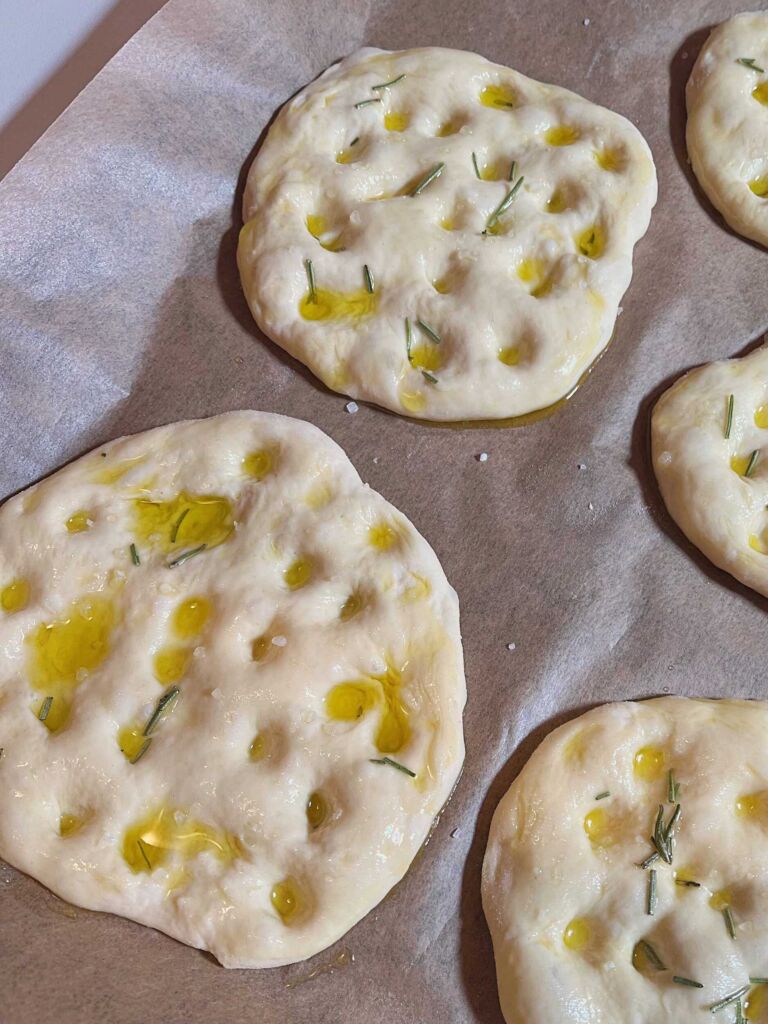
Meanwhile, preheat the oven to 220°C.
Drizzle or brush each focaccine with olive oil and use your fingers to gently spread the oil over the entire surface of each disc.
Then just with your fingertips, press into the dough to create dimples. Sprinkle course sea salt over the top. Optionally, you can add other toppings like rosemary or halved cherry tomatoes.
Bake in the preheated oven for 15-18 minutes, or until they are golden brown.
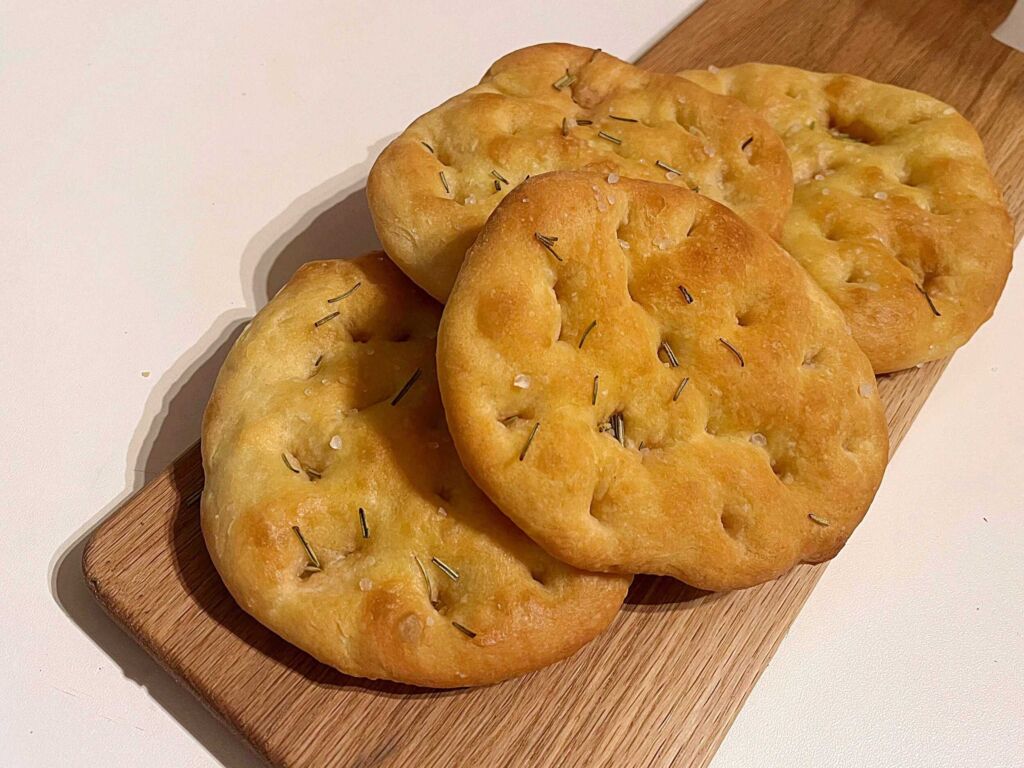
Tips and FAQs
Tips for Focaccine Success
- Use warm water to create a smooth, homogeneous dough.
- Use your hands to mix the dough – it’s our best tool!
- Make folds in the dough every 30 minutes to create more air bubbles.
How to Serve Focaccine
These mini focaccias can be served plain as an accompaniment to your lunch or dinner, or stuff them to make a variety of delicious focaccine sandwiches for the perfect picnic food!
They would also be great dipped in soup – try broccoli asparagus soup or vegetable orzo soup!
Storage
Leftovers can be stored in an airtight container for 3-4 days.
Focaccine can also be frozen! Once baked and completely cooled, place in a plastic freezer bag and freeze.
Substitutions
- Bread flour can be substituted in an equal amount for the manitoba flour.
Try experimenting with other flours using whatever you have on hand! You can substitute in 100g of whole wheat flour or semolina flour! Just keep the total flour amount 400g.
Alternatively, all 400g of type 00 flour can be used as well.
Be aware that different flour absorbs water differently, so adjust accordingly. If your dough is too dry, add warm water one tablespoon at a time until you have a soft, wet ball. The final dough should be well hydrated and too sticky to knead.
What toppings can you put on focaccine?
Herbs- fresh rosemary leaves, or a mix of dried herbs like oregano, thyme, basil
Tomatoes- fresh cherry tomatoes or sun-dried tomatoes
Olives- pitted black or green
Thinly sliced onions or shallot
More Italian Bread Recipes
Focaccine Recipe
Focaccine
Course: Bread, Antipasti, Appetizers8
servings20
minutes20
minutes2 1/2
hoursIngredients
200g type 00 flour
200g manitoba flour – *see note
250g water
5g dry brewer’s yeast – *see note
Pinch of sugar
40g extra virgin olive oil
6g salt
Directions
- Measure the flours into a large bowl. Whisk in the yeast and sugar. Slowly pour in the warm water and mix with a spoon or your hands until all the flour is incorporated and a shaggy dough begins to form.
- Add the olive oil and salt and mix. It’s easiest to use your hands to squeeze the oil into the dough to incorporate it. Once you have achieved a homogeneous ball, it is done. It will be too wet and sticky to knead any further.
- Cover with a towel or plastic wrap and let sit at room temperature.
- After 30 minutes, make folds in the dough. Wet your hands so that they don’t stick and make a digging motion, scooping the dough from the outside and folding it in towards the middle. Rotate the bowl 90 degrees, and repeat once all the way around.
- Repeat the folding again after the next 30 minutes.
- Leave to rise undisturbed for another 1 hour.
- Turn the dough out onto a floured work surface and divide into 8-10 pieces, depending if you want small or medium focaccine, 70-90g each. Form each piece into a smooth, rounded ball. With a rolling pin or your hands, press out each ball to about 1cm thick. Place each disc on a baking sheet lined with parchment paper. Cover and let rest for 30 minutes.
- Meanwhile, preheat oven to 220°C.
- Drizzle or brush each focaccine with olive oil and use your fingers to gently spread the oil over the entire surface of each disc. Then press just your fingertips into the dough to create dimples. Sprinkle salt over the top and add any desired toppings, optional.
- Bake in preheated oven for 15-18 minutes, or until golden brown.
Notes
- * Bread flour can be substituted in an equal amount for the manitoba flour
- * In Italy, I use Paneangeli Mastro Fornaio Lievito di Birra. Feel free to use whatever brand of instant yeast you prefer.

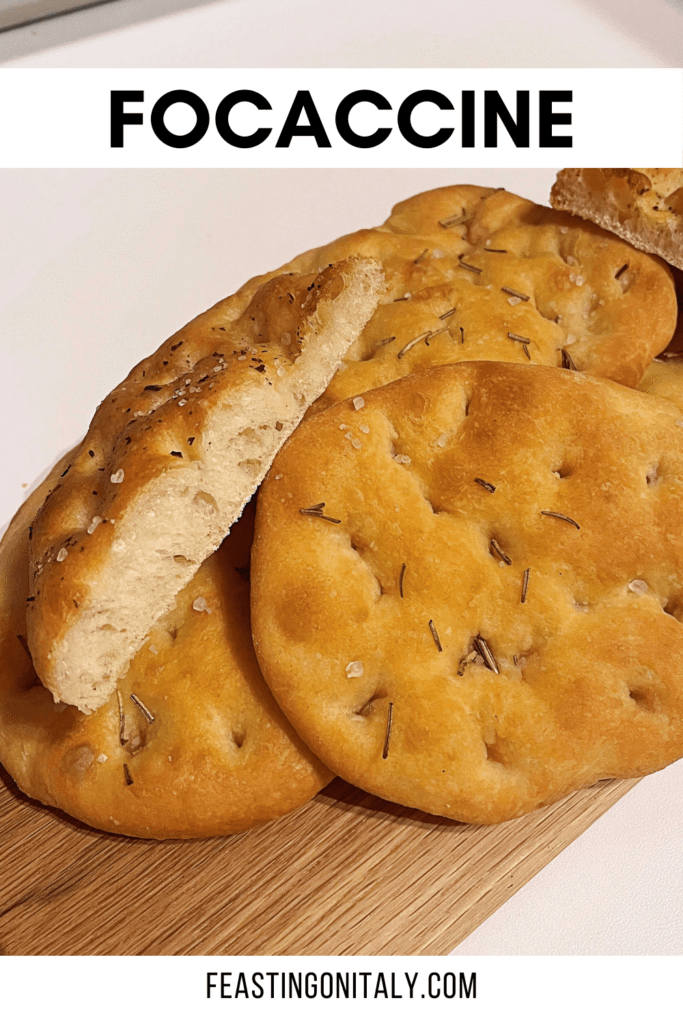

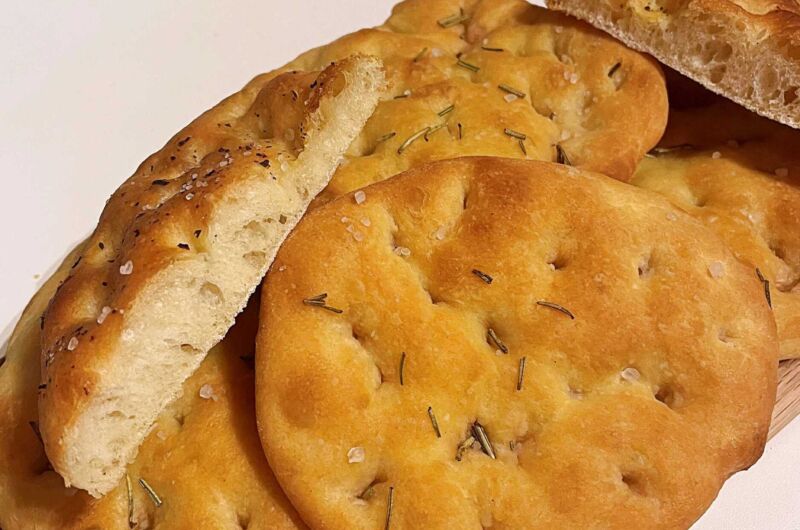

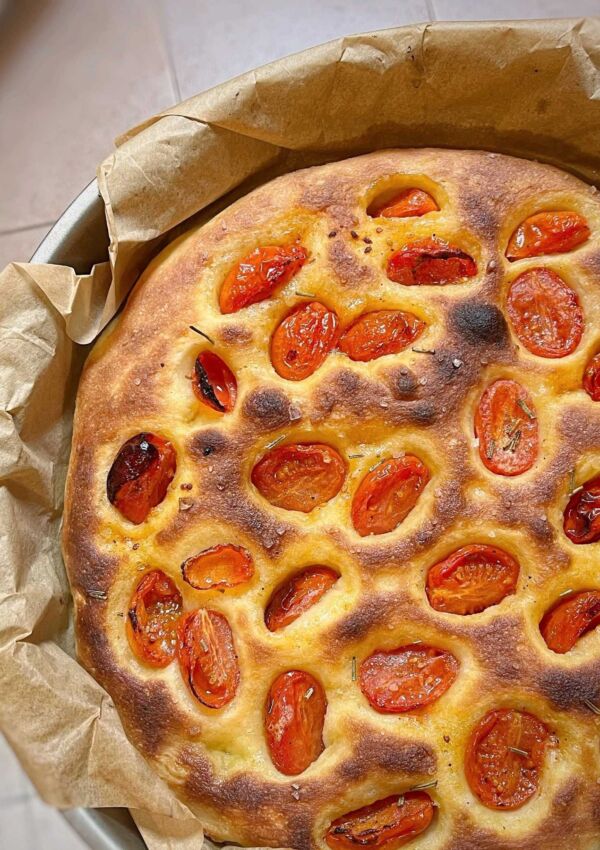

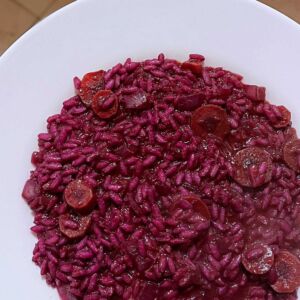

Leave a Reply
You must be logged in to post a comment.